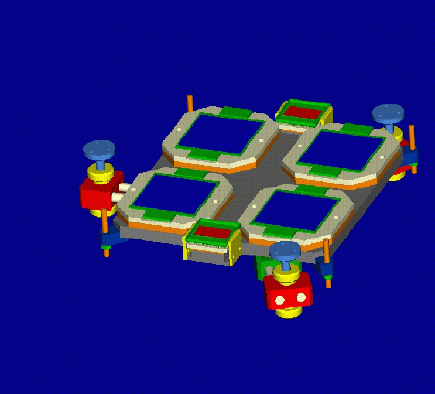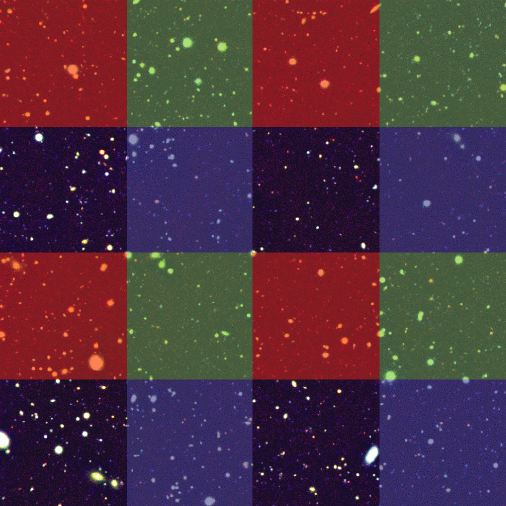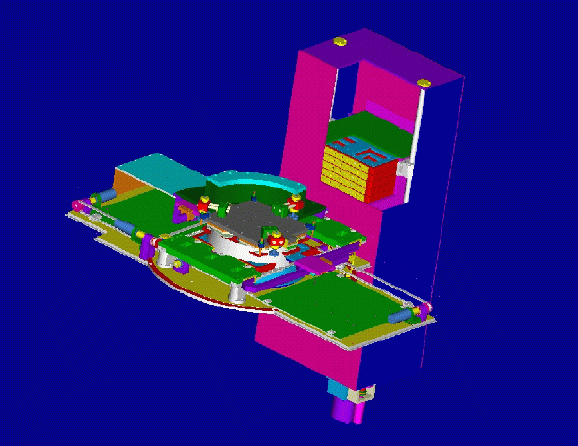
The aim of this recently started project is to build a camera which makes full use of the field of the 3.5m telescope. The total imaging area will consist of 16384x16384 pixels. LAICA will be used at the Prime Focus of the 3.5m telescope, using the K3 corrector optics. This optics has a field diameter of 1 degree at an image scale of 0.225 arcsec/pixel, so the images will be well sampled even under the best seeing conditions. A mosaic of 4 CCDs manufactured by Lockheed Martin with 4096x4096 pixels each will be used in the imaging area. Since these CCDs are not buttable, the arrangement of the detectors in the focal plane is as shown in figure 1. The spacing between the CCDs is equal to the length of the active area of a single CCD minus an overlap of about 3 percent.

This arrangement was chosen because it makes optimal use of the light
collecting area
if contiguous coverage of the field is required, since in this case a series of
4 exposures fills the gaps (see fig.2) and gives a total field of
1 square degree. Astrometry and/or photometry can be checked in the
overlapping areas.
For many applications the uncontiguous coverage of the field will not
be import at all. A further advantage of this design is that the filters
will also consist of a mosaic of 4 small filters rather than 1 single
large filter and therefore are easier available.

The design requires the full field of the K3; ray tracing calculations as well as old photographic plates have shown that the image quality is very good even in the corners of the field. According to the calculations, reflections from the surfaces of the CCDs will not be critical. Two small CCDs are used for guiding of the telescope; these CCDs will be used in the frame transfer mode, so there is only 1 shutter in common for science and guiding CCDs. The use of 2 guider CCDs allows determination of image rotation. Since the whole camera is rotatable, image rotation can be corrected for during the exposures, enabling long exposure times. The shutter (see fig. 3 ) is a large version of a focal plane shutter; each curtain has its own motor and encoder; first experiments in the lab are very promising, and we should be able to get homogeneous exposures even for exposure times around 1 second which would be very helpful for taking sky-flats. The filters are stored in a magazine which takes up 20 filters. The magazine moves up and down (see fig. 3 ) and the selected filter is moved into the beam by a grabber.
The project is currently developed at MPIA; delivery of the CCDs has been promised for spring 2000 (February to May). Development of the camera electronics and the mechanics should be finished until summer so we hope to install LAICA during the year 2000. Progress of the project is documented in the LAICA home page
Involved in the project are U.Graser (TV-guiding), K.H. Marien (CCDs), B.Grimm (electronics), K.Zimmermann and F. Briegel (software), R.Rohloff, W. Benesch and H.Baumeister (construction) and J.W. Fried(PI).
